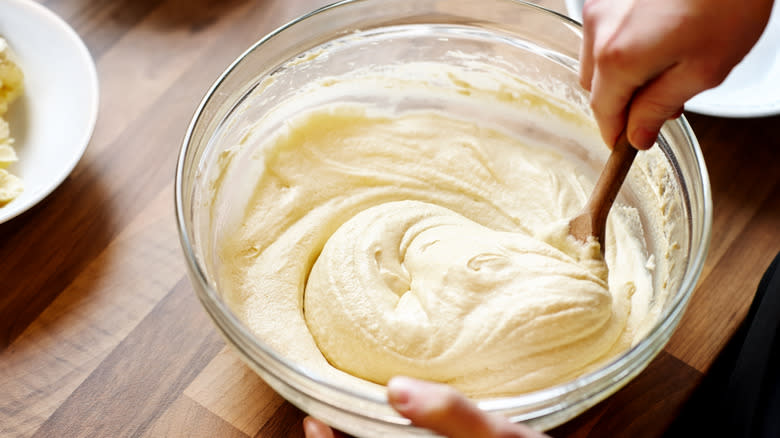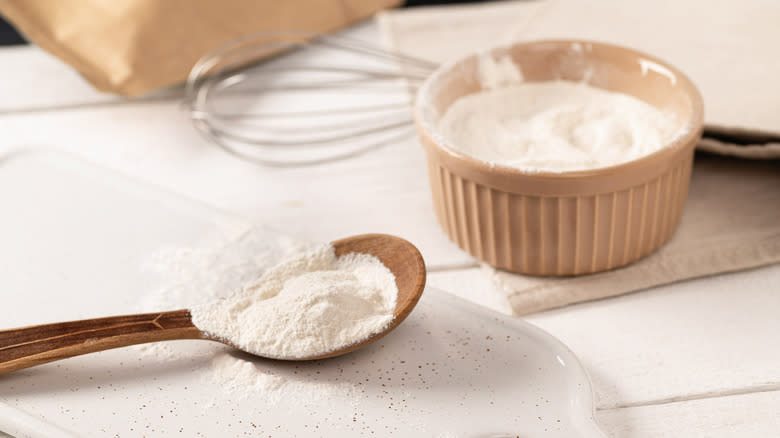Why Overmixing Your Cake Batter Is Preferred For Gluten-Free Bakes

Over mixing is a big no-no when it comes to making cake batter that contains wheat flour. Home bakers are often directed to add the flour last and "stir until just combined," followed by an admonishment not to over mix -- which will transform what should be a delicate and airy cake into something dense and tough. It turns out that over mixing is not as much a concern for gluten-free bakes -- especially those meant to support additives like fruit, as it can give the finished product more structure.
The difference is obvious: the strands of gluten protein found in wheat flour provide the structure in a batter for, let's say, a classic buttermilk vanilla cake. Over-developing them through vigorous mixing (or, really, much mixing at all) will turn the outcome chewy -- that's great for a baguette, but murder for angel food cake. All you need to do is incorporate the flour into the rest of the batter ingredients, and let the gluten do the rest. Gluten-free cake batters have to rely on something else to provide their structure, and that something typically takes the form of xanthan gum.
Read more: Cake Hacks Every Baker Will Wish They Knew Sooner
Gums Make Gluten-Free Bakes Airy, Not Gummy

Two types of gum are typically used in gluten-free baking: xanthan and guar. Both of them functionally do the same job that gluten does -- hold the batter together and thicken it. Sometimes you'll see them together in a box of pre-made gluten-free flour or cake mix (or recipe); sometimes they appear separately. As a general rule of thumb, guar gum does its best work in cold stuff like ice cream, while xanthan gum is better suited for hot stuff like baked goods and gluten-free yeasted breads.
Xanthan gum is derived from a bacterium called Xanthomonas campestris. Technically known as a water-soluble exo-polysaccharide, what gums like xanthan are great at doing is binding with water and other organic materials. Xanthan gum's inclusion in a gluten-free cake batter means everybody will stick together, transforming disparate parts into a whole. Without it, your gluten-free cakes and muffins are virtually guaranteed to be crumbly.
Over Mixing Might Be A Relative Term, But It's Still A No-No

So, is it possible to over mix a gluten-free cake batter? The short answer is no and the long answer is yes. If you're following the directions for a wheat flour recipe but substituting gluten-free flour, then the red-flashing warning signs of over mixing won't apply. However, you can actually mix a batter containing xanthan and/or guar gum to a point of diminishing returns. You can overwork the gums and end up with a stringy cake batter or rubbery cookie dough. (Having said that, doing this takes some work. Just don't take your aggressions out on a gluten-free cake batter.)
Just remember that the key difference between wheat flour and gluten-free flour is the gluten and what that does for doughs and batters. What will very quickly lead to flat, tough glutinous cakes won't make that much of a difference in their gluten-free counterpart, and may in fact help create a more robust structure to hold those incoming blueberries.
Read the original article on Daily Meal.

 Yahoo Finance
Yahoo Finance